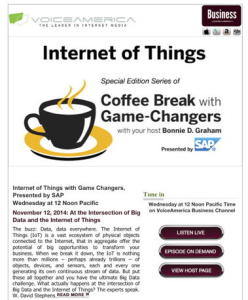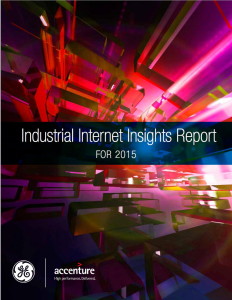(I’ve been meaning to write about this particular IoT device for a long time — my apologies for the delay)
I have no objective evidence for this, but I suspect that many C-level executives first learned about e-commerce when they placed personal orders during the Christmas season of 1995. Thus, Amazon deserves a disproportionate share of credit for launching the e-commerce era.

Magic Bands play a number of roles at Disney parks
Similarly, I suspect that many C-level executives’ first direct experience with the Internet of Things has come, or may come this holiday season, with their family’s first visit to Disneyworld since Disney began the beta testing of its MagicBands, which are arguably the most high-profile public IoT devices so far.
IMHO, Disney deserves a lot of credit for such a public IoT project, especially many of the initial reviews were decidedly mixed due to technical and management glitches — risking irritating customers.
The project reportedly cost north of $1 billion.
The major lesson to decision makers in other industries to be gained from the MagicBand is my favorite IoT “Essential Truth“: who else can use this data?
Disney uses the band data, either by itself, or aggregated with other visitors, to improve almost every aspect of park operations, marketing, and the customer experience — illustrating the versatility of IoT devices:
- control logistics, speeding entry to the park and individual rides
- coordinate outside transportation
- balance demand for various rides
- add new functionality to existing technology such as the Disney app
- control mechanical systems, such as hotel door locks
- add a social component (and avoid the stresses of families getting
- handle and speed in-park financial transactions
- personalize the park experience and improve customer satisfaction
- harvest and analyze big data on customer preferences.
The bands, which work because they have RFID chips inside, are worn on your wrist throughout your stay at the parks. When you book the trip, Disney lets you choose your favorite color, and the band comes in a presentation box with your name on it.
Before leaving, you can program it in conjunction with the My Disney Experience app and web page, entering key choices such as hotels, your favorite rides (FastPass+), dinner reservations, etc., and your credit card info so that they can be used to pay for meals and merchandise.
Disney warns visitors not to pack the bracelets in their luggage, because they are even used to board the transportation from the Orlando airport.
Putting aside the programming involved, this had to be a tremendous logistical challenge, changing the hotel locks, installing readers at each ride, putting readers in the restaurants and shops, which probably accounts for many of the glitches that customers reported during the pilot phase.
My future son-in-law, Greg Jueneman, who knows EVERYTHING about Disneyland, weighs in from a customer standpoint:
“I think they take the spontaneity out of a Disney World vacation. Everything has to be planned in advance and a schedule has to be followed. As a technology they are cool, I’m sure Disney had lots of plans for them but so far the only real thing that they do is open your hotel room without a “key” and allow you to pay for things without your cards (I’m sure Disney loves that! – some blogs Ifollow have said that spending with Magic Bands is up 40%, that’s impressive!).”
As you can imagine, there are also important data privacy and security issues: on one hand, it would probably be very cool to have Mickey come up to you and say “happy 5th birthday, Jeremy,” but that could also creep parents out, and you’d be worried about someone running up a tab on your credit card if you mislaid the band.
From my reading of the most recent media coverage, it appears that most of the beta test problems have been worked out, and that Disney is fully-committed to universal use of the bands in the future.
If you’re visiting Disney this holiday season, think about possible IoT strategy lessons for your company from the MagicBand:
- marketing: how it can personalize the customer experience and increase sales?
- transactions: how can it streamline transactions (have to think that Apple looked carefully at this in designing Apple Pay)?
- operations: how can real-time data from many users help streamline operations and reduce congestion?
Maybe you can write off the family vacation as research! Have fun.






